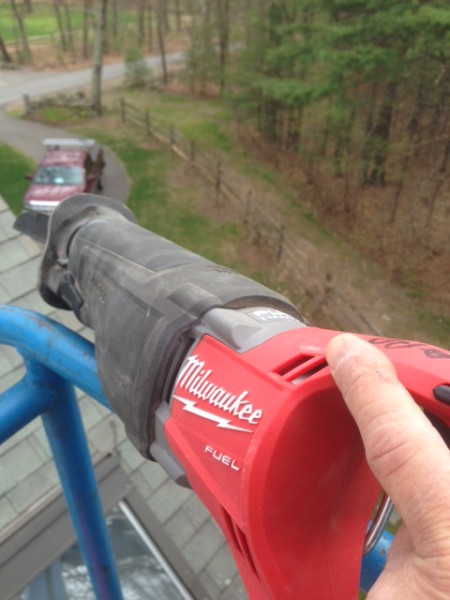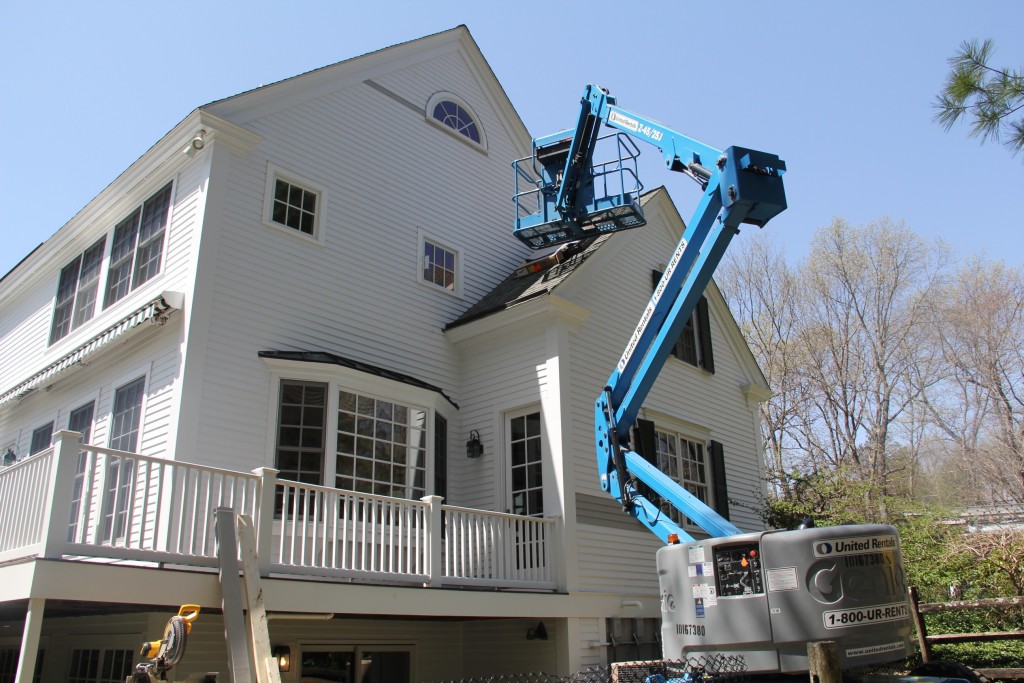
Working at Heights On Residential Homes
As carpenters, we often have to perform repairs at heights. On many homes, these repairs are quick and typically done off ladders, roof jack or ladder jacks. Working from heights can be dangerous, this article will address some considerations to stay safe.
The problem with these methods is they can be dangerous, do not provide a work surface, or tool set up area. When you stop to consider that 50 percent of falls are from less than six feet and approximately 70 percent of falls are from ladders and roofs and most of these injuries happen on residential building sites than any other workplace in the construction arena.
Factors Contributing to Fall injuries:
- Lack of or inadequate planning and hazard assessment
- Inadequate supervision
- Insufficient training
- Incorrect protection equipment
- Incorrect use or set-up of equipment
- Unwilling to choose a safer alternative
- Safe and suitable equipment being unavailable
Hard to Reach House Repairs – Elevated Heights
This Working From Heights article will address two methods, pipe staging scaffolding, and aerial lifts, that we use to reach tough access areas as well as working at heights. Aerial lifts and pipe staging are commonly used in construction, maintenance, inspection, and repair services to lift employees to an elevated work position.
Pipe Staging:
One Working From Heights solution is pipe staging or framed scaffolds. This method offers several advantages over ladders or ladder-jack assemblies by providing a wider, more stable work platform.
Working from scaffolding is much easier and safer than working from a ladder. The stability and comfort of working from a wide work platform allow you to do a better job in half the time.
Assembly pipe staging is more time-consuming because it involves assembling frames and cross braces that stack to make taller units. The most common frame section is 5 feet wide and 5 feet tall with cross braces 7 or 10 feet long. Other sizes are available. They also can be fastened to the structure for stability and feature guardrails to protect you from falling.
In addition to base plates and guardrails, we use adjustable feet that adjust by screwing for easy leveling on uneven ground.
Work Platform Planks
Special fitting work platform planks provide the work floor of the assembly, and two planks typically fill in one frame section.
TIP – When you are computing your working height, figure placing the work platform 4 to 6 feet below what you need to work on. This places the work at your midsection and in your core strength area, guardrails attached to the top of the scaffold frames allow you to work safely and concentrate on the task.
We have three sections of pipe staging in our work truck which is usually tall enough to work on most residential homes. The times where we run into problems is when a house has a walkout basement, making it taller, and other projections in the way, prohibiting basic pipe staging assembly.
In these cases we have a choice; hire a scaffolding company to professionally setup staging in our hard to access area, which is costly [$2-5,000] or rent an aerial list to reach the area.
Aerial Lift:
Proper operation and use of aerial lifts and scaffolding can make completion of tasks at elevation safer and more efficient. However, unsafe use, operation, and lift work practices can result in serious injury.
Aerial lifts are one of the most common devices used to conduct work from elevated locations and are commonly seen on commercial job sites. Aerial lifts are defined as, “any vehicle-mounted device, telescoping or articulating, or both, which is used to position personnel.” [29 CFR 1910.67(a)(1)]
The major causes of fatalities from aerial lifts are falls, electrocutions, and collapses or tip-overs. It is imperative that you take a safety course and learn the proper setup and operation of any lift you work with. See OSHA Aerial Lift Safe Work Practices.
Some commonly used brands are;
- Genie High Lift
- Condor Lift
- Snorkel Lift
Types of Aerial Lifts:
There are multiple types of aerial lift equipment, they are;
- Bucket Truck – or cherry pickers are types of aerial lifts that contain a bucket-like platform attached to a boom and mounted on top of a truck or van
- Scissor Lifts – use crisscross braces that extend and stretch upward.
- Articulated Boom Lift – extend up and over machinery and other obstacles and are able to reach elevated positions not easily approached by a straight boom lift.
- Telescoping Boom Lift – are used for applications that require high reach capability.
- Man Lift – consist of platforms or brackets and accompanying handholds mounted on, or attached to an endless belt, operating vertically in one direction only and being supported by, and driven through pulleys, at the top and bottom. These man lifts are intended for the conveyance of persons only. This section applies to man lifts used to carry only personnel trained and authorized by the employer in their use.
Fall Arrest Systems:
Personal fall arrest systems provide each worker with individual fall protection and should be worn when working from heights.
Workers wear a body harness connected by a lifeline to a fixed anchor. The anchor must be able to withstand 5,000 pounds of force, and the lifeline must be made of webbing or have a wire core if it might come in contact with a sharp edge.
Personal fall arrest systems are designed to go into action when a worker has fallen 6 feet and before contact with any lower level. Workers must be trained to use personal fall arrest systems properly and to inspect them before each use. Read how to select the best fall arrest harness.
Conclusion:
The plethora of aerial lifts available today meaning there is a lift solution for almost every worksite application. Scissor lifts, articulating booms and telescopic booms are self-propelled machines that provide fast and efficient solutions to meet the needs of each Jobsite. On residential applications, we typically require more reach and need the range of articulating and telescopic boom.

